Suction pressure transmitters for transmitting the amount of measured suction pressure. All suction range pressure transmitters measure over a negative pressure range with respect to ambient pressure on the reference side of the sensing diaphragm.
Products
 DPS300 User Switchable Pressure Range, Volts or Current Output Low DP Sensor - The DPS 300 is a low range HVAC differential pressure sensor. The lowest possible pressure range is 0...100 pascals. 2 or 3 switchable pressure ranges, plus volts or current output are included with most standard configurations.
DPS300 User Switchable Pressure Range, Volts or Current Output Low DP Sensor - The DPS 300 is a low range HVAC differential pressure sensor. The lowest possible pressure range is 0...100 pascals. 2 or 3 switchable pressure ranges, plus volts or current output are included with most standard configurations.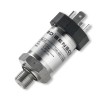 DMK457 Marine Approved Pressure Transmitter - Marine approved pressure transmitter with 4-20mA current loop output for shipbuilding with optional CuNiFe housing for sea-water compatibility
DMK457 Marine Approved Pressure Transmitter - Marine approved pressure transmitter with 4-20mA current loop output for shipbuilding with optional CuNiFe housing for sea-water compatibility
 DMP457 Marine Approved Pressure Transmitter
DMP457 Marine Approved Pressure Transmitter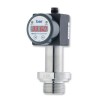 DS200P Sanitary Low Range Pressure Gauge, Switch and Sensor
DS200P Sanitary Low Range Pressure Gauge, Switch and Sensor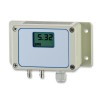 DPS200 HVAC Differential Pressure Transmitter
DPS200 HVAC Differential Pressure Transmitter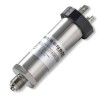 DMP331i High Accuracy Pressure Transmitter
DMP331i High Accuracy Pressure Transmitter
Applications
 -15psig 0-10V out negative pressure transducer and display for air extraction use - A digital display pressure transducer for air extraction use to measure negative pressure difference of air inlet over a range of 0 to -15 psi g from a 1/4 NPT male process connection, and sending the corresponding 0-10Vdc signal through the DIN plug electrical connection.
-15psig 0-10V out negative pressure transducer and display for air extraction use - A digital display pressure transducer for air extraction use to measure negative pressure difference of air inlet over a range of 0 to -15 psi g from a 1/4 NPT male process connection, and sending the corresponding 0-10Vdc signal through the DIN plug electrical connection. 0 to -200 mbar negative gauge suction range 4-20mA output stainless steel pressure sensor - Economical stainless steel diaphragm pressure sensor with semiconductor strain gauges for measuring over a 0 to -200 mbar negative gauge suction range and generating a 4 to 20 milliamps output signal.
0 to -200 mbar negative gauge suction range 4-20mA output stainless steel pressure sensor - Economical stainless steel diaphragm pressure sensor with semiconductor strain gauges for measuring over a 0 to -200 mbar negative gauge suction range and generating a 4 to 20 milliamps output signal. -10…30 kPa g compound range inert gas pressure transmitter for ship IG system - An intrinsically safe, marine approved compound range pressure transmitter for ship cargo tank IG system use to measure pressure of inert gas over a range of -10 to 30 kPa g from the G1/2 male process connection, and sending the corresponding 4-20mA signal through the DIN plug electrical connection.
-10…30 kPa g compound range inert gas pressure transmitter for ship IG system - An intrinsically safe, marine approved compound range pressure transmitter for ship cargo tank IG system use to measure pressure of inert gas over a range of -10 to 30 kPa g from the G1/2 male process connection, and sending the corresponding 4-20mA signal through the DIN plug electrical connection. -5 to +5 psi g low compound range 4 to 20 mA output OEM pressure sensor - Low compound range OEM pressure sensor with semiconductor strain gauges for measuring over a -5 to +5 psi gauge pressure range and generating a 4 to 20 milliamps output signal.
-5 to +5 psi g low compound range 4 to 20 mA output OEM pressure sensor - Low compound range OEM pressure sensor with semiconductor strain gauges for measuring over a -5 to +5 psi gauge pressure range and generating a 4 to 20 milliamps output signal.
 Negative 250mbarg range 4-20mA out suction range pressure sensor
Negative 250mbarg range 4-20mA out suction range pressure sensor Negative 500 mmH2O g range 4-20mA output pressure sensor
Negative 500 mmH2O g range 4-20mA output pressure sensor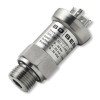 Under and Over pressure monitoring -10…+200 mb pressure transmitter
Under and Over pressure monitoring -10…+200 mb pressure transmitter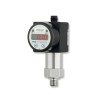 Low vacuum leak detection 4-20mA current loop sensor & gauge
Low vacuum leak detection 4-20mA current loop sensor & gauge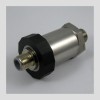 Minus 750-0 mmHg gauge suction range 4-20 milliamps output sensor
Minus 750-0 mmHg gauge suction range 4-20 milliamps output sensor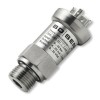 Landfill biogas extraction well depressure pressure transmitter
Landfill biogas extraction well depressure pressure transmitter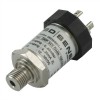 0 to -300 mmH2O vacuum transmitter
0 to -300 mmH2O vacuum transmitter Minus 25 mb vacuum intrinsically safe 4-20mA pressure sensor
Minus 25 mb vacuum intrinsically safe 4-20mA pressure sensor
- 10 mmHg suction range 4-20mA output sensor
- Minus 15 mbar (6 inH2O) range suction pressure transmitter
- Lobe pump suction intake vacuum transmitter
- 80 kPa suction pressure transducer with current output
- Dredging vacuum pressure Transmitter
- Vacuum suction sensor & wall mount digital readout with switched contacts
- Minus 100 pascal suction pressure transmitter
- ATEX approved negative 10 mbar vacuum pressure transmitter
- 100 mmWG negative gauge range vacuum sensor
